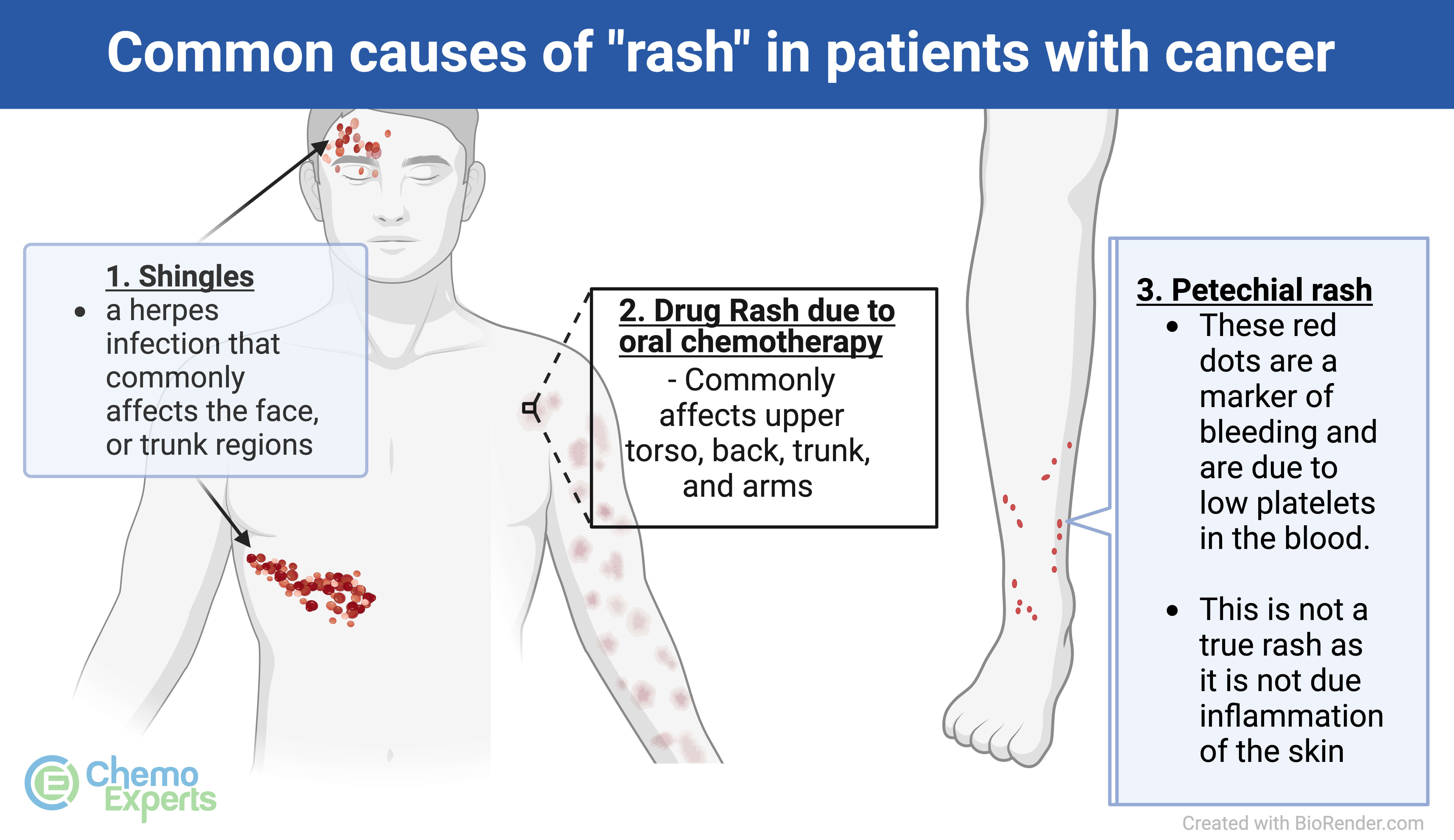Side Effect: Skin Rash
What is a skin rash?
A skin rash is a change in the appearance of the skin that can lead to redness, and may result in bumps, blisters, or other abnormal textures. It can be caused by a variety of factors, such as an allergic reaction to something eaten, something that touches the skin, certain medications, infection, or other underlying medical conditions.
What does a skin rash look like?
The appearance of a skin rash can vary widely depending on the cause. Rashes may appear as flat, red, patches, or small, raised bumps, blisters, or scaly, dry patches. In some cases, the rash may be accompanied by other symptoms, such as itching, fever, pain, or swelling.
Skin Rash

Click to enlarge
Rashes may appear as flat, red, patches, or small, raised bumps, blisters, or scaly, dry patches. Depending upon the cause, rashes may be itchy, painful, or not particularly bothersome.
Who is at risk for developing a skin rash?
Anyone can develop a skin rash, but certain factors can increase the risk. For example, people with sensitive skin, allergies, or a family history of skin conditions may be more susceptible to developing a rash. Additionally, certain medications or medical treatments, such as specific chemotherapy agents, can increase the risk of developing a rash. These include medications known as epidermal growth factor receptor (EGFR) inhibitors, and include:
And Bruton tyrosine kinase (BTK) inhibitors, such as:
It is important to have all rashes evaluated early by a doctor. Some rashes may be caused by viral infection, such as shingles (also known as herpes zoster) and require treatment as early as possible in order to have the best outcome.
How do you prevent a skin rash?
Preventing a skin rash often depends on identifying and avoiding the cause. For example, if a rash is caused by an allergic reaction, avoiding exposure to the allergen can help prevent the rash from recurring. However, when taking chemotherapy or other medications that may cause a rash, preventing the rash may not be entirely possible. In these cases, taking steps to protect the skin, such as using sunscreen or wearing protective clothing, can help reduce the risk of developing a rash or lessen its severity.
Vaccination with a shingles vaccine can be a highly effective method of preventing a rash from the zoster virus.
How do you treat a skin rash in patients with cancer?
Treating a skin rash in patients with cancer may involve a combination of approaches, including managing the underlying cause, relieving symptoms, and promoting healing. For example, if the rash is caused by chemotherapy, switching to a different medication or adjusting the dosage may be necessary if the rash is severe enough. For mild rashes, certain lotions, creams, or ointments known as “topical treatments” may be recommended by your doctor. If these are not effective, or if the rash is severe, oral (pill form) or even intravenous medications may be used to relieve itching, reduce inflammation, or prevent or treat infection.
References
1) Geisler AN, Phillips GS, Barrios DM, Wu J, Leung DYM, Moy AP, Kern JA, Lacouture ME. Immune checkpoint inhibitor-related dermatologic adverse events. J Am Acad Dermatol. 2020 Nov;83(5):1255-1268.
2) Saguil A, Kane S, Mercado M, Lauters R. Herpes Zoster and Postherpetic Neuralgia: Prevention and Management. Am Fam Physician. 2017 Nov 15;96(10):656-663.
3) Sibaud V, Beylot-Barry M, Protin C, Vigarios E, Recher C, Ysebaert L. Dermatological Toxicities of Bruton's Tyrosine Kinase Inhibitors. Am J Clin Dermatol. 2020 Dec;21(6):799-812.
Created: August 21, 2023
Updated: October 4, 2023

